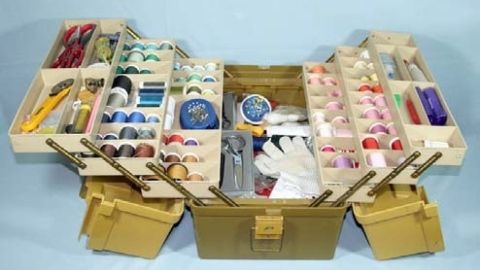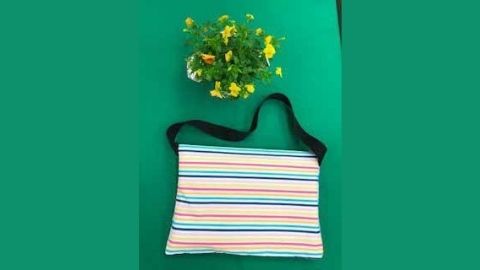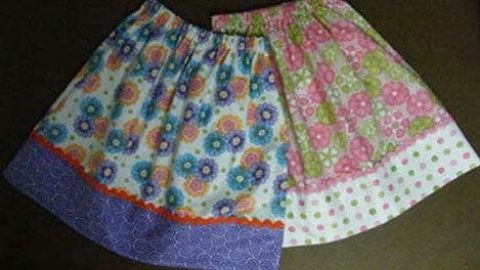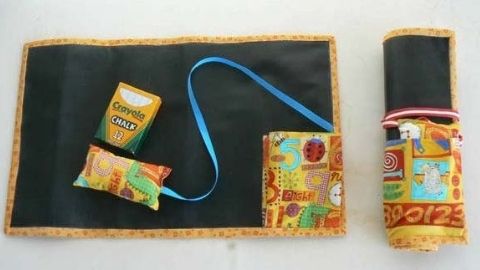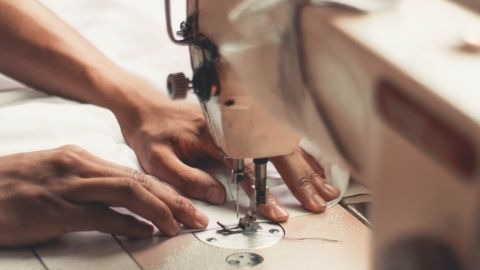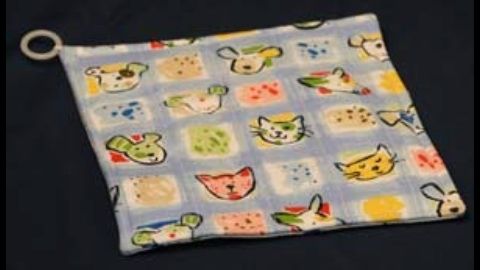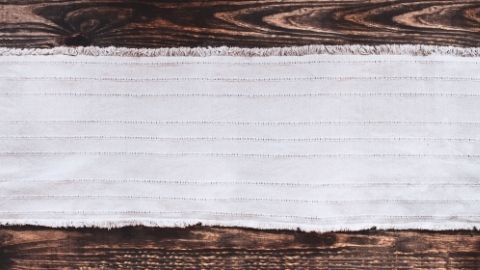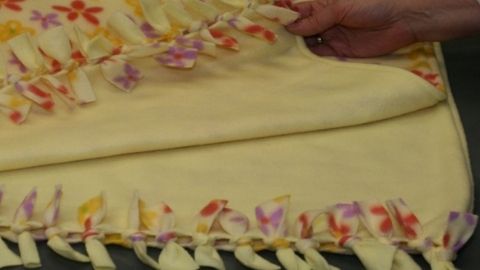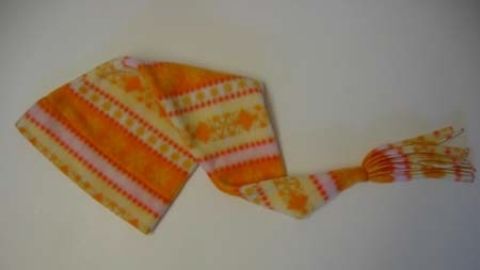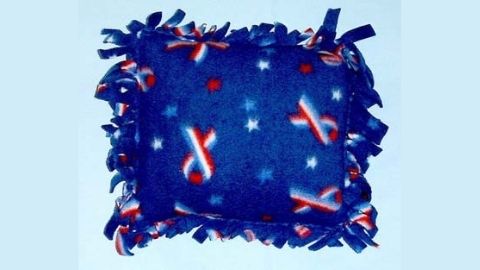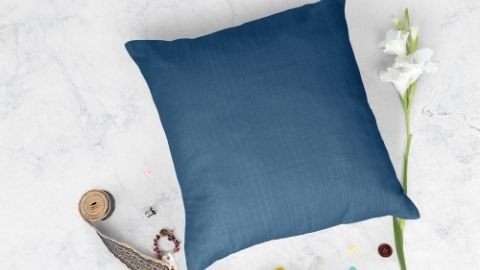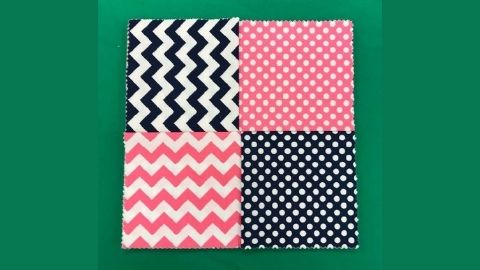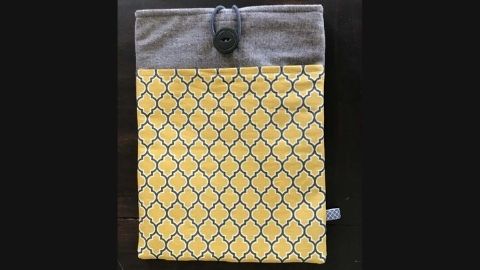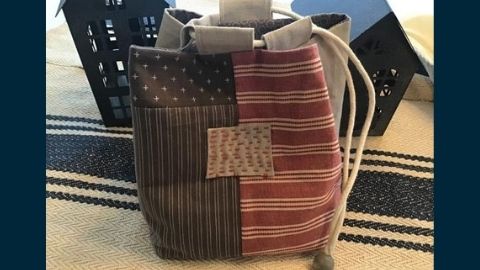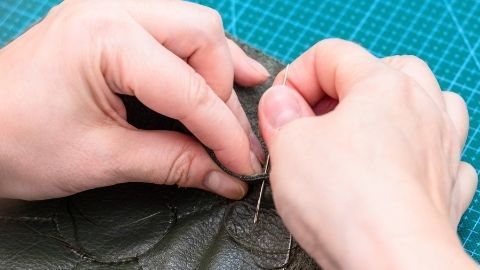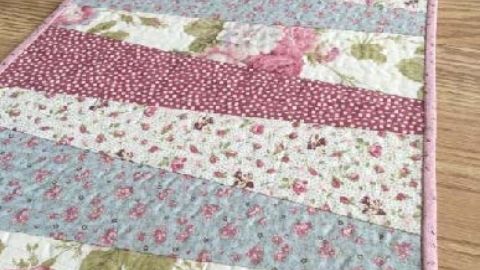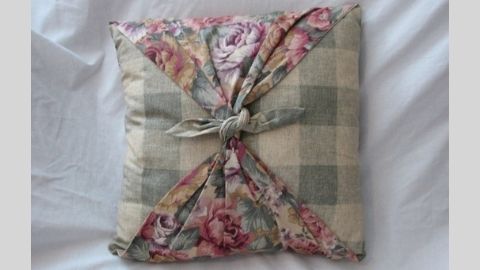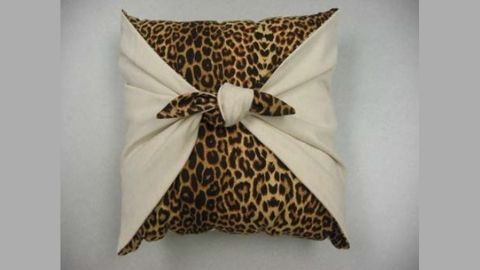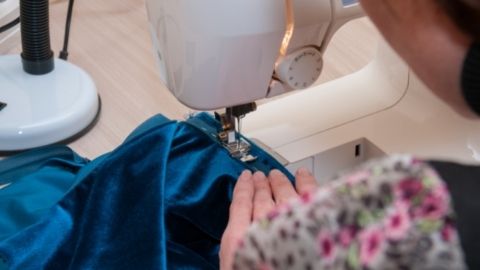Easy Table Runner
Supplies needed:
- 1/3 yard (12") fabric for feature fabric 1/2 yard (18") fabric for border/back sewing machine
- Matching thread
- Basic Sewing Supplies (see Fact Sheet: FL/ST/ Construction 2008/101)
- Wash fabric before cutting to eliminate shrinkage and remove excess dye.
- Straighten edges and press fabric.
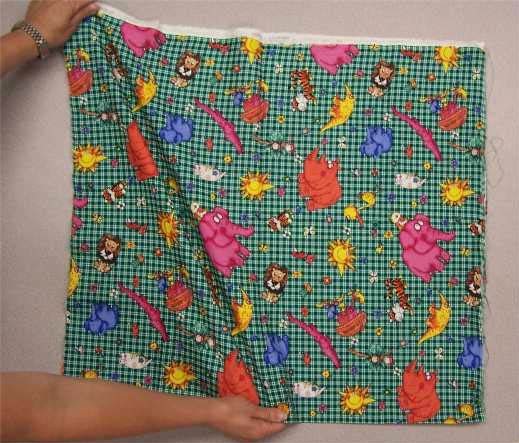
Sewing clue—Woven fabric grainline is established by pulling a thread across the fabric from selvage edge to selvage edge. Clip ½ inch into the fabric along one selvage edge. Grasp one or two crosswise threads between your thumb and index finger and pull gently while pushing the fabric toward the other selvage edge with your other hand. Cut along the line left by the pulled threads. Another way to straighten the edge is to tear the fabric. Tearing the fabric causes the edge to become stretched and ruffled. Shrink the stretched edge by steam pressing the fabric back into shape. The fabric will now lie flat. Fold the fabric in half matching the selvages and the newly straightened edges. The fabric should lie flat with the edges matching. If it does not lie flat, realign the fabric by holding the long edge of the fabric along the selvage edge and gently “pulling” the fabric on the bias. This will realign the threads so that the crosswise threads run at right angles to the lengthwise threads.
Pattern markings:
Sewing clue—Becoming familiar with the markings in the Diagram Key will aid you in reading instructions. Most patterns have similar keys.
Diagram Key:

Right side of feature fabric

Right side of border/ background

Wrong side feature
Cutting Instructions:
Step #1
- From the feature fabric: Cut one rectangle 12" long and the width of the fabric.
- From the border/backing fabric: Cut one rectangle 18" long and the width of the fabric
Sewing clue—Fabrics come in different widths such as 42", 45", 54" and 60". When cutting the table runner width make sure that both pieces are cut the same width.

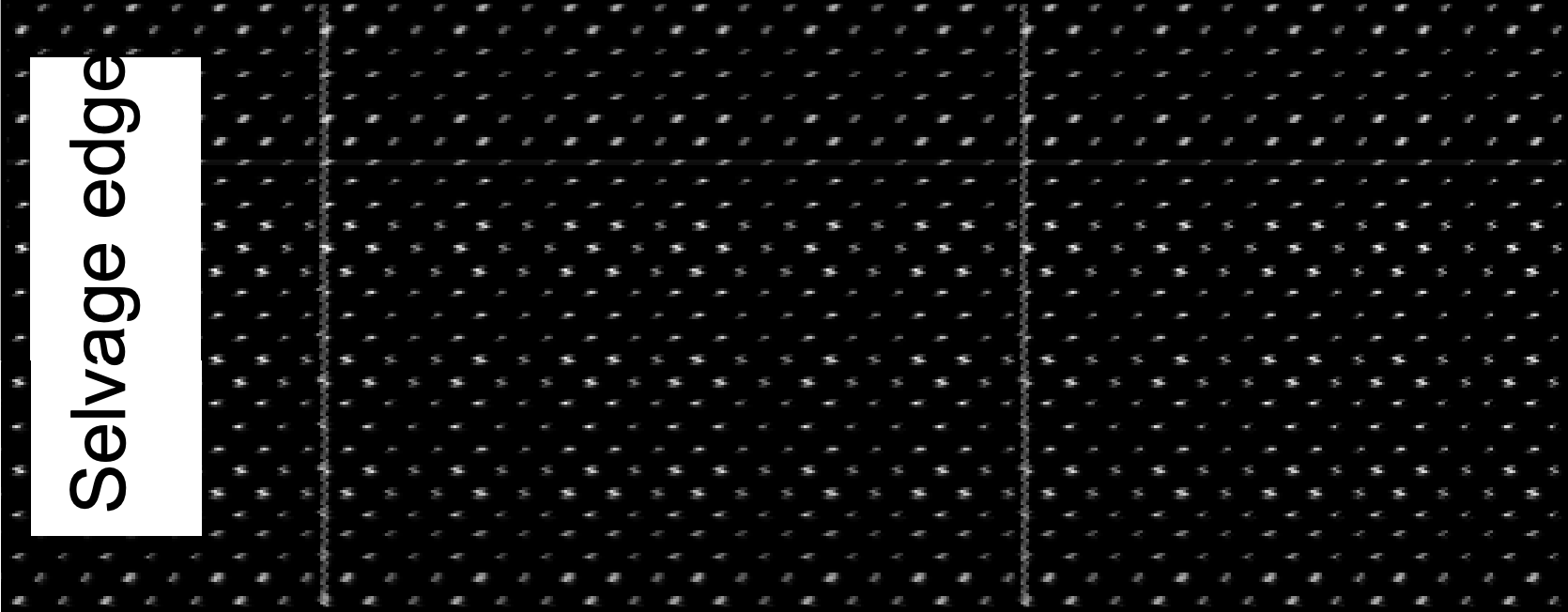
Step #2
- Turn right side out.
Step #3
- Lay on a flat surface and smooth backing to form border.
- Press table runner so that borders are even on each side of the feature fabric.
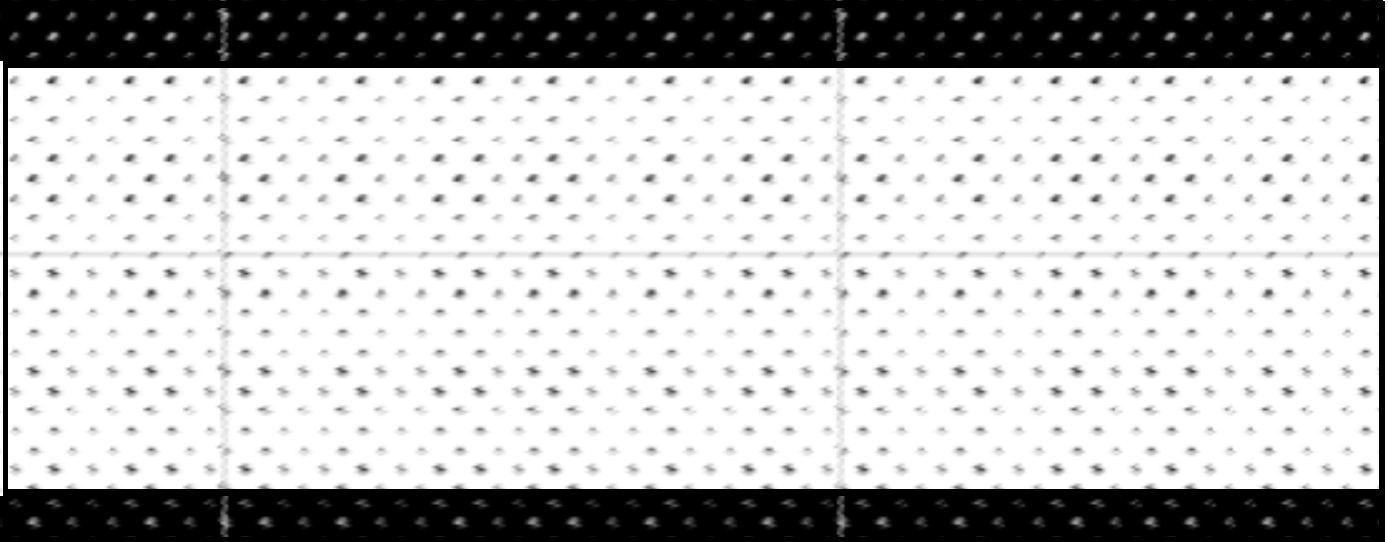
Step #4
- To prevent the edges from fraying use a seam finish across both ends.
Sewing clue—A seam finish is a way to prevent a seam from fraying. An easy finish is to zig-zag over the seam’s raw edge. Set the stitch length at 2.5 and the width at 3.5.On a light weight fabric a three step zig-zag stitch can help prevent a puckered edge. Serging over the raw edge would also prevent the edge from fraying.
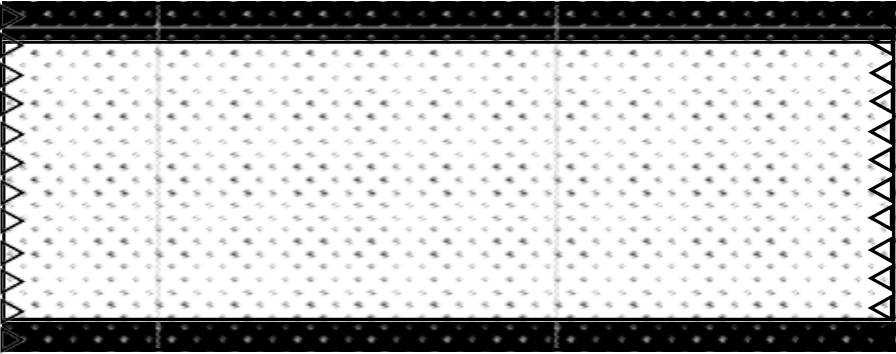
Step #5
- To make end points, match border seams on each end and pin.
- Sew with a 1/4" seam allowance on each end (for beginning sewers use a 1/2" seam allowance).
- Cut corner at an angle to remove excess bulk.
- Press seam open.

Step #6
- Turn right side out leaving a point. Repeat on the other end. Be sure that the seam matches the center of the table runner.
- Press.
Step #7
- Tack or sew down pointed ends. Optional trims may include buttons, tassels, rick rack, etc.

Authors
Christine Jensen, M.S., USU Extension Agent, Emery County; Debra Proctor, M.S., USU Extension Agent, Wasatch County; Ronda Olsen, M.S., USU Extension Agent, Uintah County; Karen Biers, Ph. D., USU Extension Specialist
Related Research


 Utah 4-H & Youth
Utah 4-H & Youth
